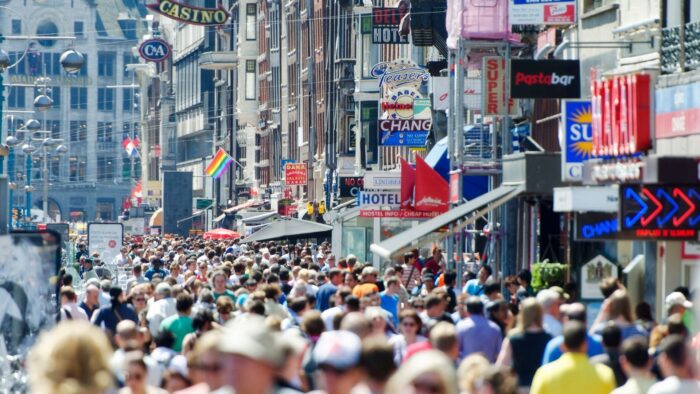European Capitals Ranked by Tourist Visits: From Most to Least Popular Destinations

Travel has made a roaring comeback, but this resurgence has brought the challenge of overtourism to the forefront, especially in Europe’s popular destinations. From visitor caps in Marseille to cruise ship bans in Venice, various cities are grappling with how to handle the influx of tourists without compromising the charm that attracts them in the first place.
But which European capitals are the most and least crowded with tourists? Let’s dive into the data from Holidu, a holiday rental search engine, which compares local population sizes with 2019 tourist numbers, to uncover the European capitals with the highest and lowest tourist per resident ratios.
Most Overtouristed Capitals:
- Amsterdam, Netherlands: With 12 tourists for every resident, Amsterdam tops the list. The city, known for its extensive canal network and vibrant cultural scene, is redefining its image beyond its nightlife and coffee shops.
- Dublin, Ireland: Dublin follows closely with 11 tourists per resident. Famous for Guinness and the lively Temple Bar area, the city’s charm continues to draw in visitors.
- Tallinn, Estonia: This Eastern European gem sees 10 tourists per inhabitant, offering a blend of medieval history and modern culture.
- Paris, France: The iconic Paris, with its famous landmarks like the Eiffel Tower and the Louvre, has nine tourists per resident.
- Athens, Greece: Rounding out the top five, Athens attracts eight tourists per inhabitant, drawn to its ancient history and vibrant street life.
Least Crowded Capitals:
- Berlin, Germany; Madrid, Spain; Brussels, Belgium; Budapest, Hungary: These capitals are the ‘least-touristed’ with only two tourists per resident, offering more breathing room for visitors.
- Other Capitals: Prague, Edinburgh, Copenhagen, Lisbon, Stockholm, Vienna, Rome, and London fall in the middle range, with tourist-to-resident ratios varying from eight to three.
Beyond the Capitals: For those seeking less crowded experiences, smaller cities and seasonal destinations often face more significant overcrowding. Dubrovnik in Croatia, for example, welcomed an average of 36 tourists per resident in 2019, mainly during the summer season. Similarly, Venice, Bruges, and Rhodes each had around 21 tourists per resident, with their popularity peaking during the holiday season.
In Turkey, cities like Antalya and Muğla are increasingly popular, with five and three visitors per inhabitant, respectively.
As travel continues to evolve, these figures shed light on the changing landscape of tourism in Europe. They offer valuable insights for travelers seeking either the hustle and excitement of a busy capital or the tranquility of a less crowded city, guiding them to make informed decisions for their next European adventure.
